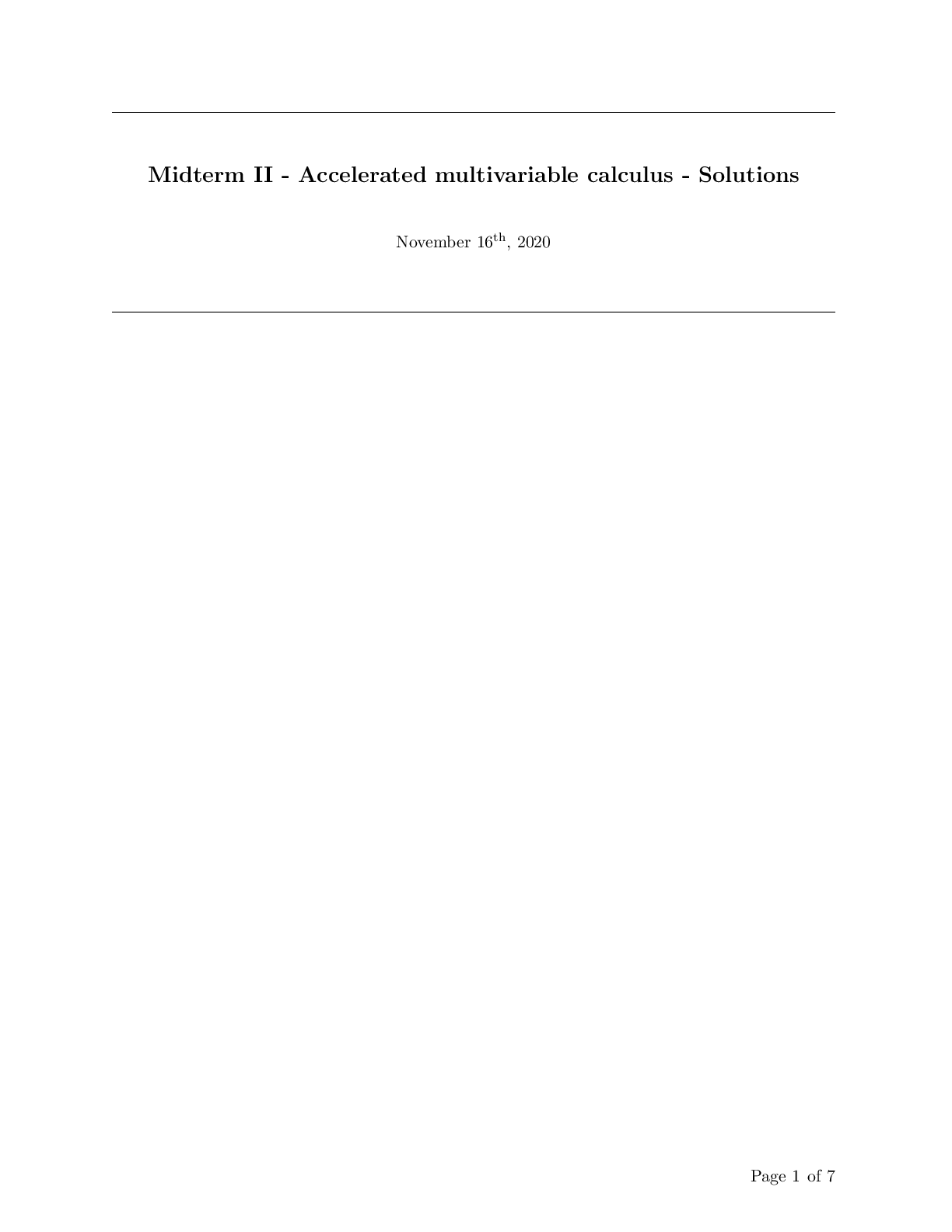Mathematics > QUESTIONS & ANSWERS > Harvard University - MATH 2413Midterm2_solutions GRADED A+ (All)
Harvard University - MATH 2413Midterm2_solutions GRADED A+
Document Content and Description Below
Midterm II - Accelerated multivariable calculus - Solutions November 16th, 2020 Page 1 of 71)a) Give the linear approximation of f(x; y; z) = x2e2z − yz at the point (1; 1; 1). e2 − 1 + 2e2(x �... �� 1) − (y − 1) + (2e2 − 1)(z − 1) b) Find the greatest rate of change of f(x; y) = x2 − y2 at (1; 1). The gradient of f is h2x; −2yi. At (x; y) = (1; 1) it is given by h2; −2i. The greatest rate of change at (1; 1) is then jh2; −2ij = 2p2. c) Give an example of a function f(x; y) define on all of R2 that admits partial derivatives at (0; 0) without being continuous at (0; 0). As seen in the lecture, one can take f(x; y) = x2xy +y2 for (x; y) 6= (0; 0) and f(0; 0) = (0; 0). d) Does there exist a function f(x; y) with continuous second order partial derivatives such that: fx (x; y) = 2x + y2; fy(x; y) = x − y2: Justify your answer. We compute: fxy = @y(2x + y2) = 2y fyx = @x(x − y2) = 1 Since 2y 6= 1 and f has continuous second order partial derivatives, this is not possible [Show More]
Last updated: 2 years ago
Preview 1 out of 8 pages

Buy this document to get the full access instantly
Instant Download Access after purchase
Buy NowInstant download
We Accept:

Reviews( 0 )
$8.00
Can't find what you want? Try our AI powered Search
Document information
Connected school, study & course
About the document
Uploaded On
Mar 23, 2021
Number of pages
8
Written in
Additional information
This document has been written for:
Uploaded
Mar 23, 2021
Downloads
0
Views
55














